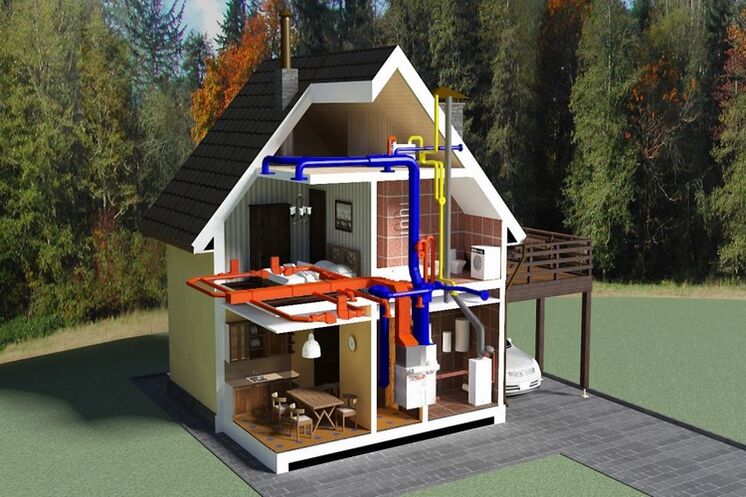Resource and energy saving technologies require a mandatory integrated approach to electricity generation, distribution and consumption. And in the house construction phase, modern energy-saving technologies are always coupled with innovations in the field of construction, as a significant part of the electricity is used to heat the house in cold weather and cool it in warm weather. This immediately requires the intended use of energy-saving materials. In addition, a personalized household supply system allows, in some cases, the complete abandonment of the traditional method of electricity supply.
Energy saving technologies in construction
The best example of energy-saving technologies to date can be the so-called "energy-efficient houses" in the construction industry, which ideally maintain a comfortable temperature in winter without the use of a conventional heating system and an air-conditioning system in summer.
Such structures are also called Zero Energy Houses - "zero energy houses" or "passive houses", depending on the technological variants.
In order to get as close as possible to the norms of such a house, it includes:
- install a custom boiler room or other heat source, often connected to pumps that return heat from the exhaust duct to the exhaust air, ground or sewage,
- replace some of the solar energy (collector) and the direct energy of the sun is used according to the heat balance of the building, combining transparent and reflective structures,
- modern thermal insulation materials are used and this applies to both building materials and communication systems.
The energy saving method described above assumes that the building will be the final recipient of the power plants ’electricity. Now, however, the possibility of a full transition to individual energy supply systems is seen as an innovative practice when the building itself actually becomes a "power plant" and begins to distribute electricity to other consumers.

This is possible, for example, with the widespread use of nano-photovoltaic cells, which are called one of the most promising solutions. In Freiburg, Germany, a local solar institute uses the city square as a kind of "test site" for solar testing, introducing solar panels into the stadium, rebuilding entire neighborhoods (58 residential buildings and an office building on the outskirts of the city). district) for the new concept of "active houses" The main obstacle to the widespread adoption of technologies is the high cost of ultrapure industrial silicone used for batteries (approximately USD 450 / kg). It has been replaced by nanotechnology and a special carbon fullerene. But so far six times 2, 5 times lower than that of silicone solar panels.
Energy saving technologies in everyday life
The main direction in the creation of energy-saving technologies in everyday life is the individual regulation of energy consumption using "smart" technologies, depending on:
- residents' personal habits and microclimate preferences,
- the time of year (day) when the "intelligent" system rebuilds itself, deciding on power-up and work intensity.
For example, an automatic home lighting system will only turn on the lamp when needed, turn it off during the day, and turn it on in the evening when sound is activated through the built-in microphone. If there is noise within a range of 5 meters, an energy-saving lamp lights up automatically and does not go out while someone is in the room.
Until these "intellectual" innovations become dominant, experts suggest applying methods of "preventive saving" of electricity in everyday life, which are:
- replacement of incandescent bulbs with energy-saving (reduced by 5-6 times consumption) or even more economical LEDs,
- the transition to energy-efficient household appliances (A- A +++), which can be 50% different from obsolete models,
- Switching off devices (equipment) in standby mode: TVs, music centers and tape recorders that consume 3-10 W when switched off but not yet switched on.
- turning off the computer or putting it to sleep, which "eats" 70-120 kW / h per month during day and night work.
Particular attention should be paid to the refrigerator, which is recommended:
- do not place it next to the stove (increases energy consumption by 25-30%),
- do not load unfrozen food,
- prevents the formation of a gap in the seal,
- do not cover the radiator or support your "back" against the wall.
The introduction of energy-saving technologies in housing and communal services looks like a transition to drives that optimize rotational speeds depending on the actual load, which can save up to 50% by operating elevators or ventilation equipment.


























